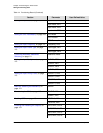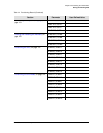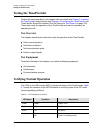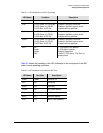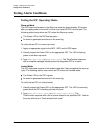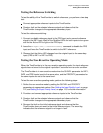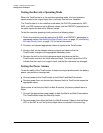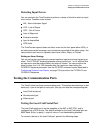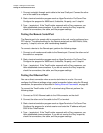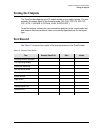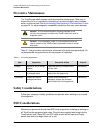
097-58001-02 Revision G – April 2008 TimeProvider User’s Guide 149
Chapter 5 Testing the TimeProvider
Testing Alarm Conditions
Testing the Reference Switching
To test the ability of the TimeProvider to switch references, you perform a two-step
test:
Connect appropriate reference inputs to the TimeProvider.
Create a fault on the selected reference signal and observe that the
TimeProvider changes to the appropriate secondary input.
To test the reference switching:
1. Connect a suitable reference signal to the PRS input and a second reference
signal to the INP1 input. Wait for the Qualified LEDs for both inputs to turn green
and for the Active LED to light on the PRS input.
2. Issue the
ED-EQPT::PRS:::INSTATE=DISABLE; command to disable the PRS
input and force the TimeProvider to switch to the INP1 reference.
3. Observe that the Active LED changes from the original input to the secondary
input (PRS to INP1 or INP1 to PRS).
Testing the Non-Revertive Operating Mode
When the TimeProvider is in the non-revertive operating mode, the input reference
signal does not revert to the original input after it recovers from an error condition.
The TimeProvider is in non-revertive mode when the QLEVEL parameter for INP1,
INP2, and PRS inputs is set to the same value, and the PRIORITY parameters for
the same inputs are set to the same level.
To test the non-revertive operating mode, perform the following steps:
1. Define the non-revertive mode by setting the QLEVEL and PRIORITY
parameters to appropriate values. See Setting the Input Quality Level, on page
112, and Setting the Input Priority Level, on page 113, for further information.
2. Provision and connect appropriate reference inputs to the TimeProvider.
3. Create a fault on the selected reference signal and observe that the
TimeProvider changes to the appropriate secondary input.
4. Remove the fault on the initial reference signal and observe that the
TimeProvider does not revert to that initial reference input. The event log
indicates that the reference signal is no longer in fault.




